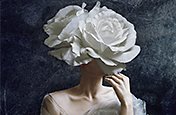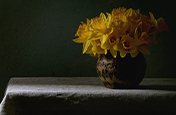Find deeper meaning with symbolic photography.
Explore how photographers use symbolism to communicate ideas through their art, and try this powerful tool for yourself with advice from pros.
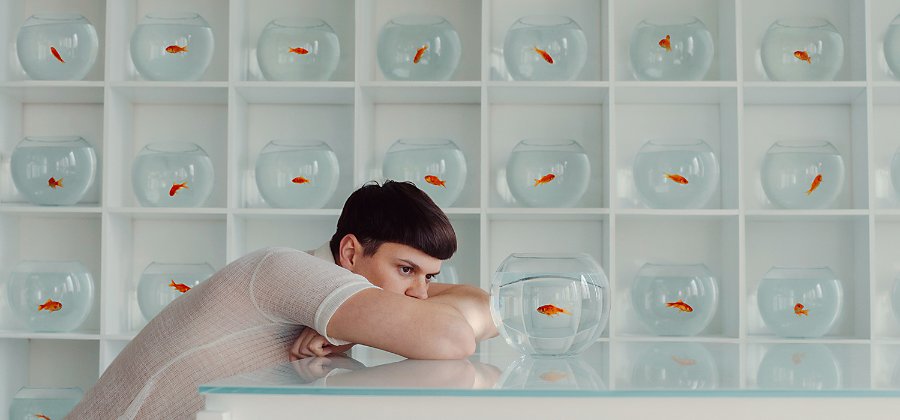
Photo by Alex Stoddard
Go deeper with symbolic imagery.
Similar to conceptual photography and surrealism, symbolic photography uses objects, colors, and themes to convey specific ideas and intentionally evoke emotions. “I think it’s really all about an object that has some sort of deeper meaning,” says photographer Lauren Johnson.
A symbolic image is meant to be easily understood, so be thoughtful with the elements you incorporate. But keep in mind that not everyone interprets symbols in the same way. In fact, most symbols vary in meaning across cultures and countries, and some change in meaning over time. Plus, new symbols gain traction and significance online and through pop culture.
“What I love about social media is that when I share my images online, I’ll often get people from different cultures writing in and telling me what their interpretation of the photo is. And sometimes it’s wildly different from what I intended,” explains photographer Alex Stoddard.
Symbolism can help your photo tell a story. In portraiture, photographing someone in front of a piano implies that the subject is musical, artistic, and creative. In food photography, if you serve food on fine china, it can symbolize elegance and the upper class. If that same food is photographed on paper plates, it tells a very different story about the recipe. Symbolism is a strong, versatile tool that you can use across all fields of photography.
Symbols in fine art.
“There are many recognizable symbols that you can find throughout classical art, especially in the Renaissance period and the Baroque period,” says Stoddard. “I tend to gravitate toward those elements because they’re timeless.” If you’ve seen a painting that uses a skull to symbolize death, then you’ve seen a classic memento mori piece, which uses skeletal remains to touch on the subject of mortality.
And you can use those same symbols in your modern fine art photography. “I like to reference art that has withstood the test of time, because it obviously hits a chord with people. And it spans different cultures and time periods,” says Stoddard.
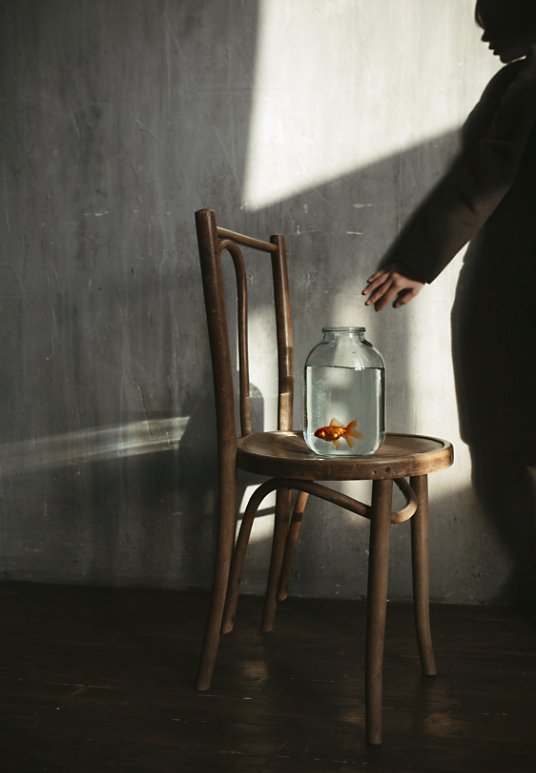
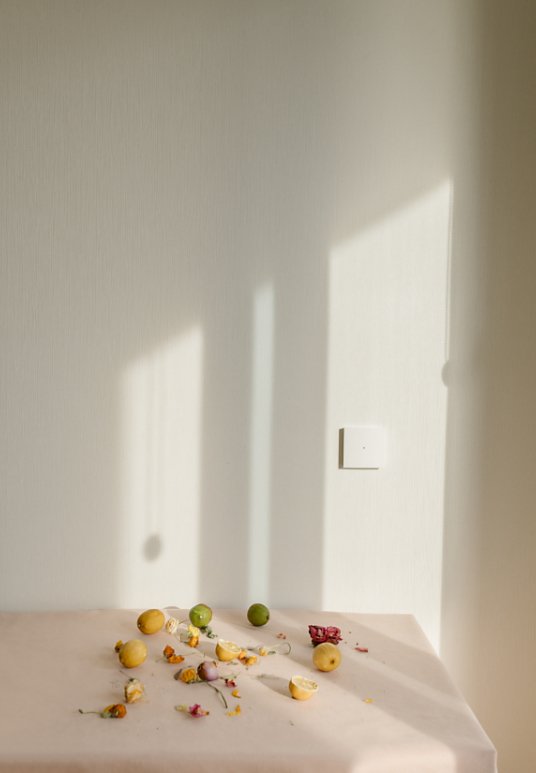
Different types of symbolism.
While every person and culture interprets symbols and archetypes differently, that can be part of the fun. Explore these different symbols and their meanings in visual art.
Color
Color is a great way to experiment with symbolic photography, since it’s versatile and accessible. Different colors evoke strong feelings, and each hue has its own meaning around the world, so don’t assume your audience will share your associations with a particular color. For example, red represents passion and love in North America, grief and death in some African cultures, and fertility and luck in China.
“I like learning how different cultures look at different things. With wedding dresses, for example, in some cultures, people wear black to weddings because that color represents fidelity, marriage, and love. But in more Western cultures, white is the symbol for a wedding dress because that can represent purity,” says Johnson.
Death and time
In addition to the classic skull, items like ravens, vultures, hourglasses, and clocks can also symbolize death in art. You’ll often see still lifes with bright, healthy flowers paired with a skull. This can represent the passage of time or the fleeting nature of life. Consider how you arrange objects together in a composition to create new, deeper meanings.
Nature
Different plants, animals, and elements have their own symbolic meanings. “I use a lot of nature, like fire, water, earth, and plant life in my photos. And each of those has a different meaning,” says Stoddard. Water can symbolize power and wisdom, while fire can represent everything from passion to destruction to rebirth.
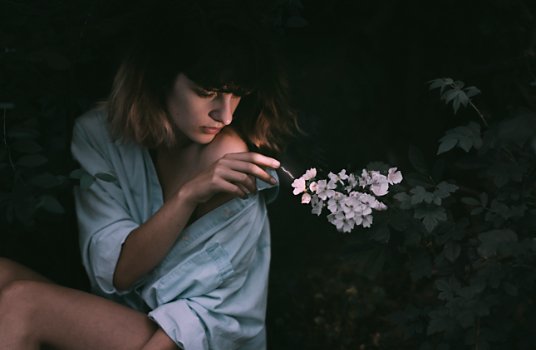
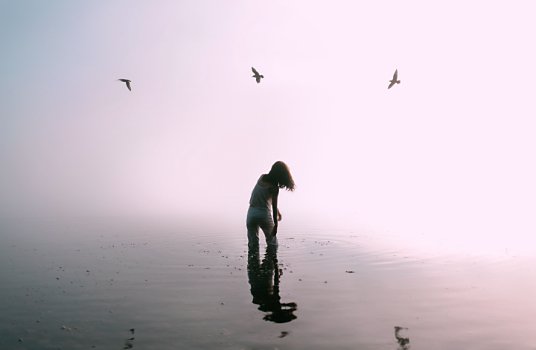
Photos by Lauren Johnson
Objects
Objects can evoke a wide range of emotions and ideas. While a crown can symbolize power and victory, a pen can represent diplomacy and stability. “I like to use weapons as symbols. Sometimes swords or arrows can have double meanings. They’re objects of destruction, but they can also reference Cupid’s arrow and love,” adds Stoddard.
Shapes
Geometric shapes and their orientation to one another can express another type of symbolism. In traditional Australian Aboriginal art, the use of shapes and symbols was a way to record culturally significant stories and teachings about the land. Meanwhile, in Western cultures, straight lines often represent order, while circles often symbolize unity.
Religion and legends
Beyond cultural differences, symbols can evoke religious and mythological ideas as well. “There’s the Christian interpretation of the snake, but the snake can also be a symbol for healing,” says Johnson. While technically the same subject matter, the snake in the Garden of Eden and the snake wrapped around the staff in the medical caduceus convey vastly different meanings and tell unique stories.
If you want to use these symbolic images in your photos, be sure to research myths and religions before you start. You might find more unique symbols with dual meanings. Explore the world of conceptual photography for more inspiration as well.
How to plan the perfect symbolic photo.
Start with an idea.
“It’s all about observation and identifying the different elements of your own life that continually pop up,” says Johnson. While you can always choose a classic, well-known symbol as the focus of your photo, you can also identify symbols that are uniquely important to you.
“And a lot of times, you’ll go out and you won’t quite know what you want to create. It just sort of happens naturally with what you’re feeling. A lot of it is serendipitous,” Johnson adds. Whether you start with a crystal-clear idea or you come across an object, such as a lost child’s toy, and decide to include it in your photo, don’t hesitate to let your idea evolve as you work.
Prepare for the photoshoot.
“When I have an idea, it becomes a matter of gathering together all of the elements that I want to include in that photo — like costumes and props,” says Stoddard. “Most of my photos are self-portraits, so it’s always convenient that I have myself on hand as a model when inspiration strikes.”
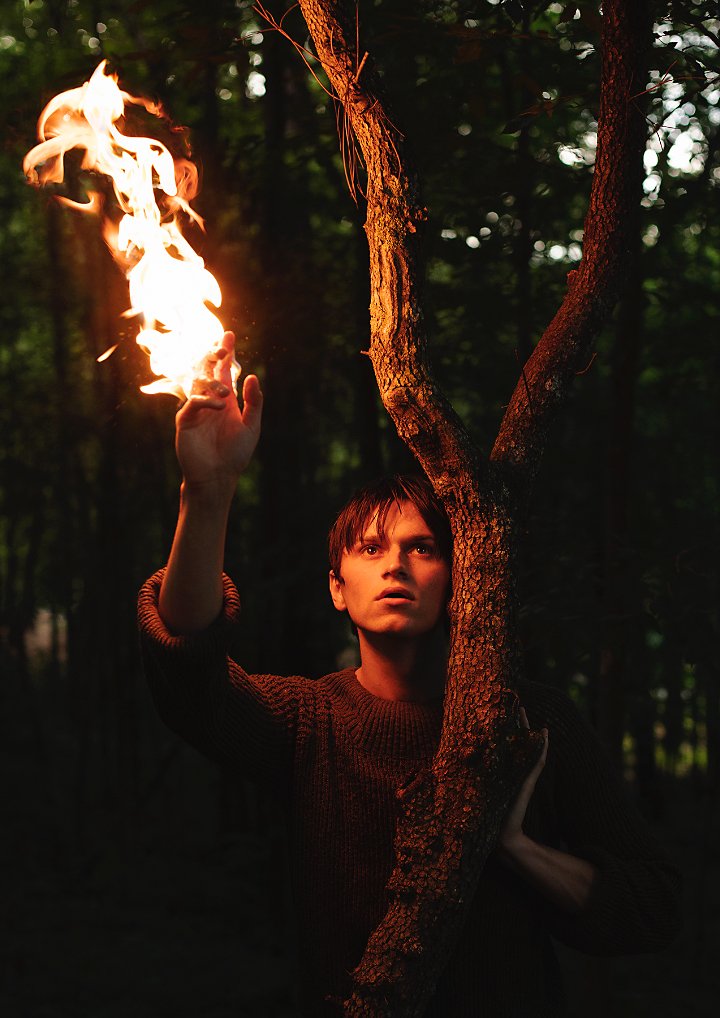
Photo by Alex Stoddard
Consider your setting and location as well when planning a shoot. If you want to capture a photo of someone holding a torch to symbolize enlightenment, truth, or life, you’ll need to gather the right equipment. Photographing fire can be tricky, so make sure you’re outside, with the right lighting (and with a fire extinguisher on hand). Planning a symbolic photo is like planning any other photography shoot — you just need to be prepared.
What to keep in mind as you shoot symbolic images.
Usually, symbolic photography is not something that happens in one shot in-camera. Whether you create composite images or apply effects in post-production, it takes more than a single snap to capture a good symbolic photo.
“I don’t like to use a lot of stock photos or images from different shoots that weren’t done at the time. If it’s all shot at the same time, when it comes to post-production, it makes everything so much more seamless to edit together,” says Stoddard.
If you want to photograph symbolic objects to edit together later, take photos of the items from different perspectives and with different lighting configurations. This ensures you’ve got enough material to work with when you edit them. You can also take neutral photos with even lighting and plain backgrounds to serve as a basis for the image.
As you shoot, keep in mind where your photo will be viewed or used. Since symbolism is so versatile, it’s an effective tool in editorial shots or product photography to tell a story about a brand or company. If your photo includes products, make sure the branding is visible, and check in with your client as you work to ensure your end photo works for their needs while still telling a story.
Jump into the post-production process.
Whether you need to make slight tweaks to a photo or create a complex composite image, Adobe Photoshop is a great place to get started. If you’re new to photo editing, it can be helpful to follow a quick tutorial to get a grasp on blending images using layer masks.


“For new creatives, I encourage you to experiment. That’s the biggest thing that helped me grow. Learn what you like to shoot and try new things,” says Stoddard. Whether you experiment with editing tools, effects, or ideas, symbolic photography is a great realm to try something new.
“And don’t be afraid to share your work with other people. If you’re creating in a vacuum — if you’re not sharing the work and getting other people’s perspectives — it won’t be as strong as it could be,” says Stoddard. You want viewers to understand the idea you’re communicating. If people aren’t understanding your idea, it’s time to go back into Photoshop and try something new. The editing process can constantly evolve, so be open to feedback and making changes.
“Just go out and make a bunch of work, because that’s how you learn,” adds Johnson. Art is never perfect, but practice can help you get better. When you use symbolism, there’s plenty of room to pull in deeper meanings and unexpected ideas. So get out there and make something new.
Contributors
Do more with Adobe Photoshop Lightroom.
Edit photos easily with Lightroom presets, Super Resolution, easily share photos from any device, and access your projects anywhere with cloud photo storage management.
You might also be interested in…
Understanding the art of surreal photography.
Look into the world of surrealism, and find out how to make your own dreamlike images.
The art of still life photography
Improve your composition skills by learning the art of still life photography.
Creating great portrait photography.
Take a step closer to perfect portraits with tips and advice from professional photographers.
Introduction to black and white photography.
Learn to use black and white photography to hone photography skills and capture perfect photos.
Paket Lightroom
Edit, kelola, simpan, dan bagikan foto dari mana saja.
Gratis selama 7 hari, selanjutnya Termasuk PPN.
Fotografi
Dapatkan Lightroom, Lightroom Classic, Photoshop, dan penyimpanan cloud sebesar 20 GB. 7 hari gratis, selanjutnya Termasuk PPN
Semua Aplikasi
Dapatkan seluruh 20+ aplikasi kreatif desktop dan seluler
Gratis selama 7 hari, selanjutnya Rp868.686/bulan.
All Apps
Get all 20+ creative desktop and mobile apps.
7 days free, then Termasuk PPN
